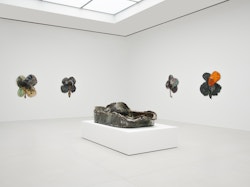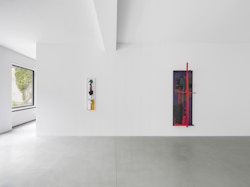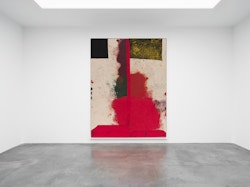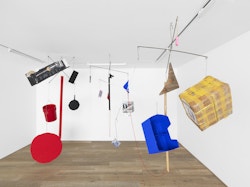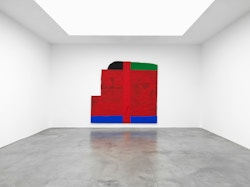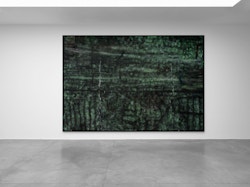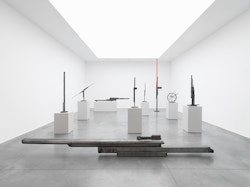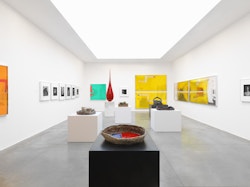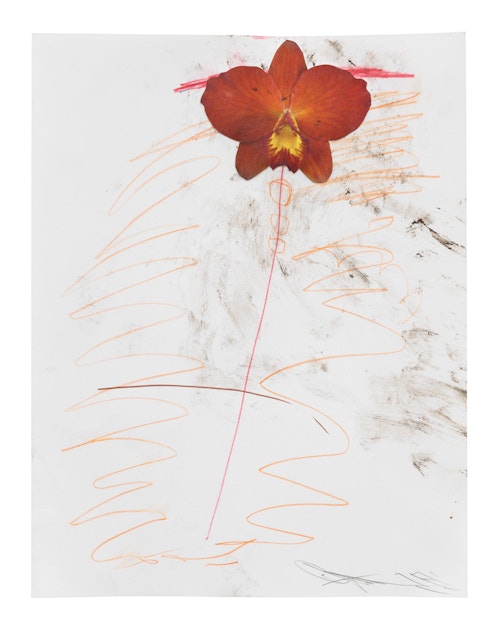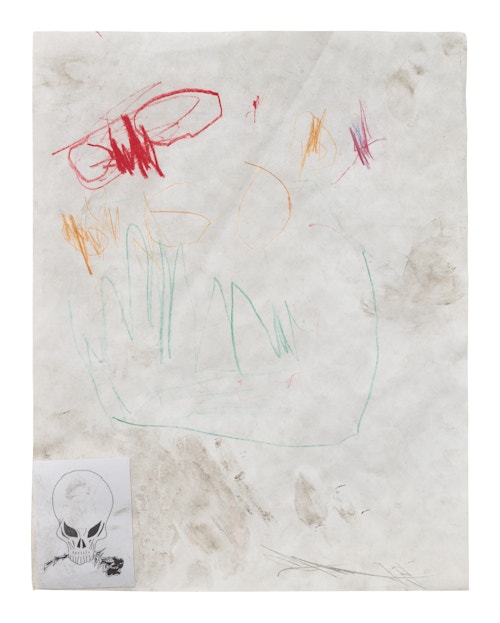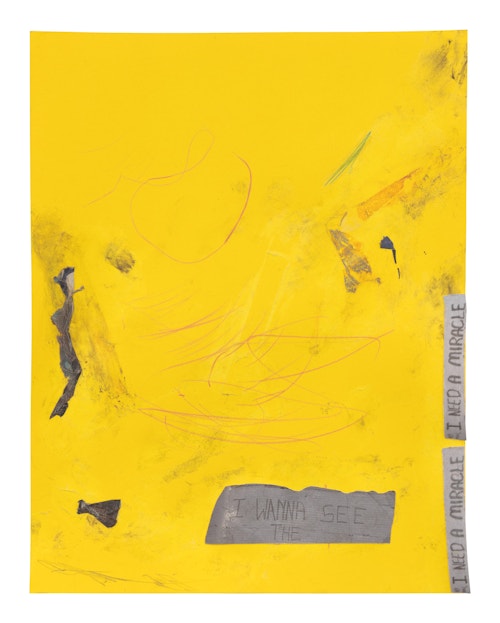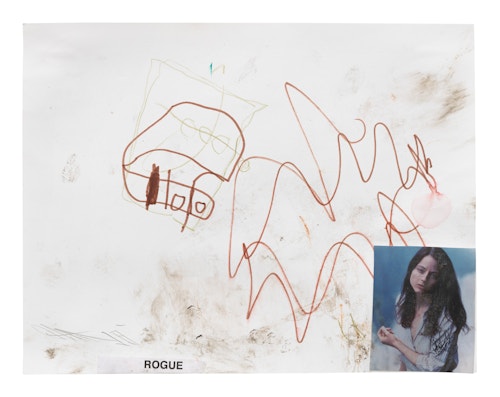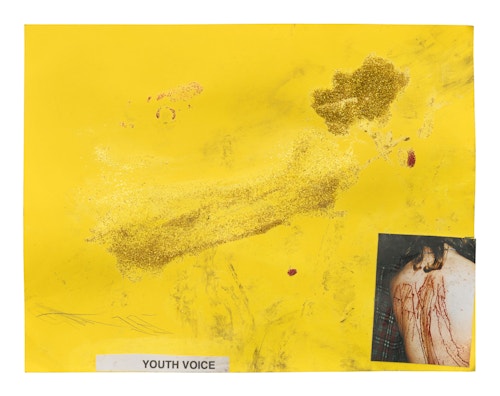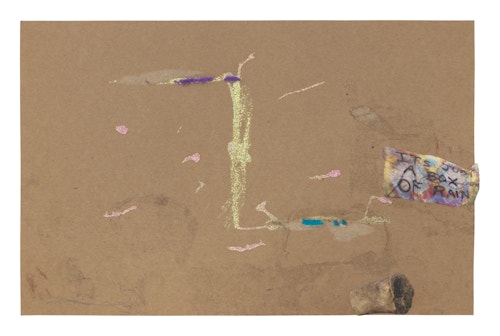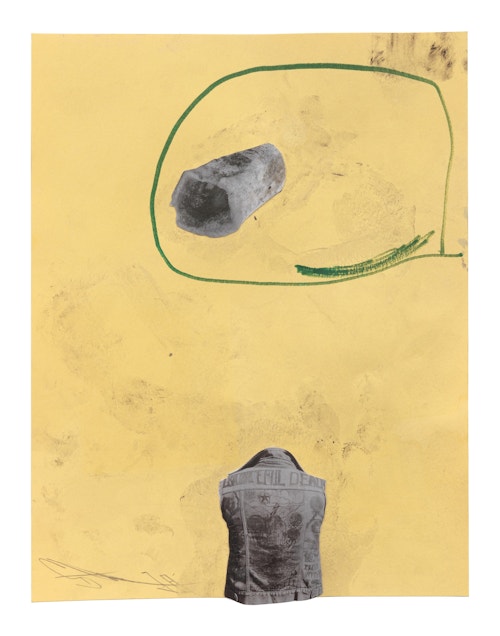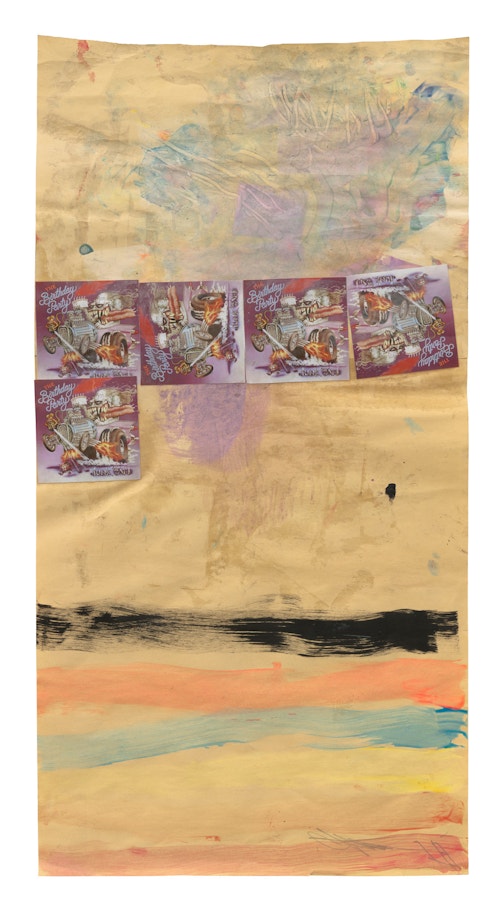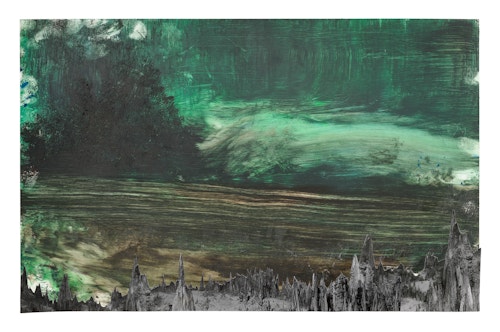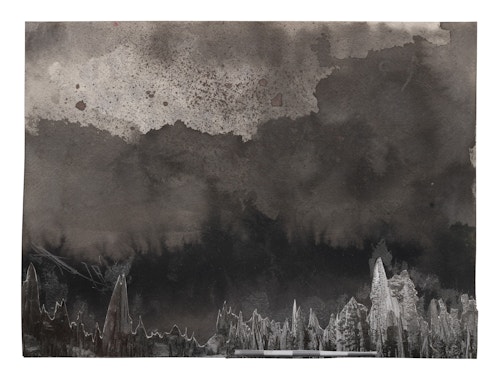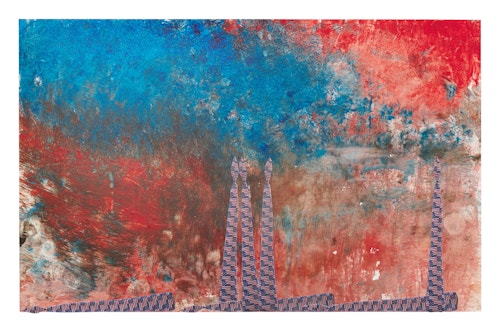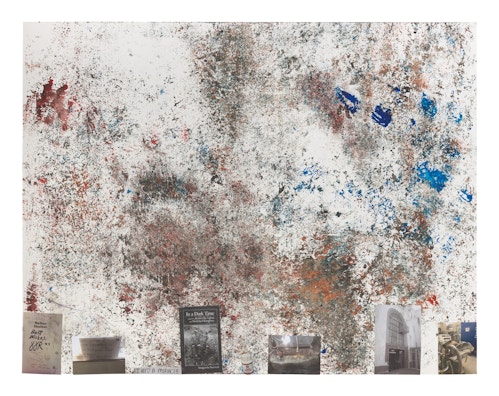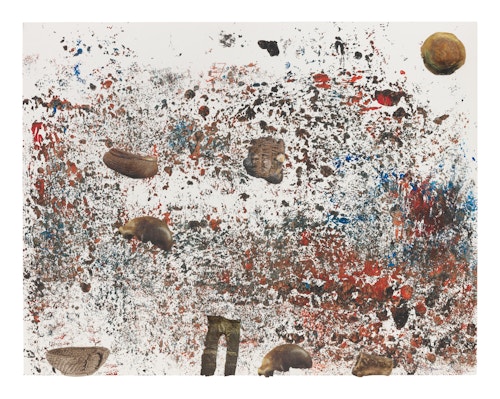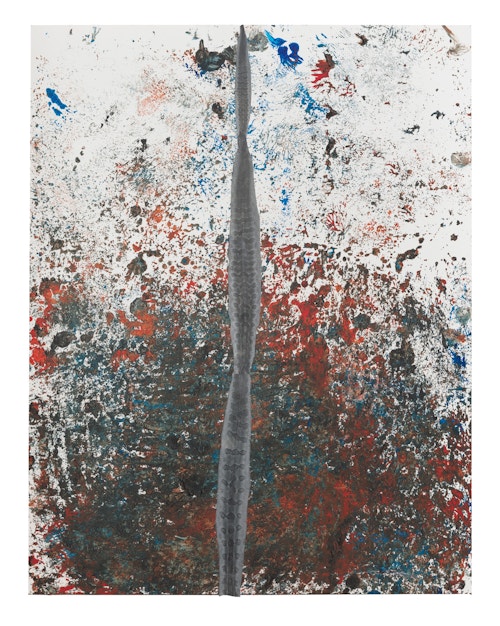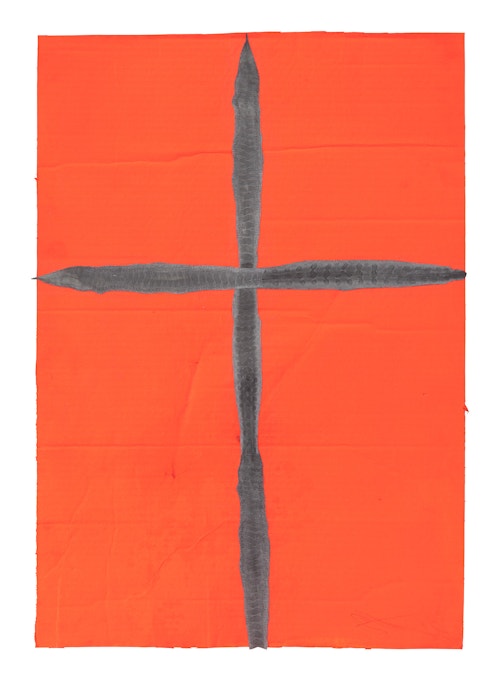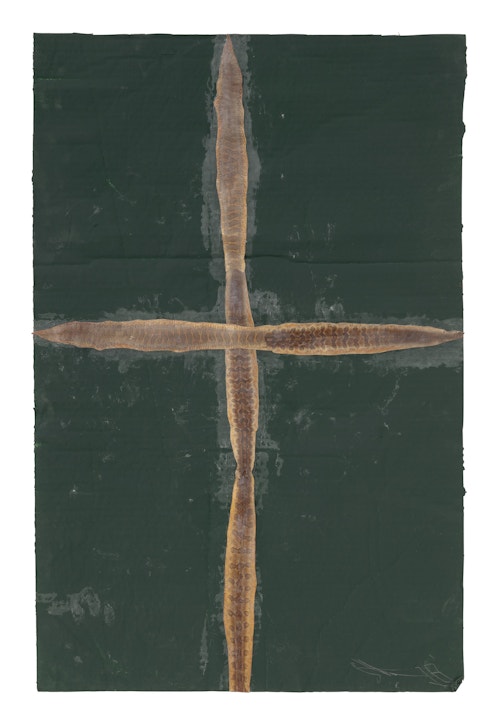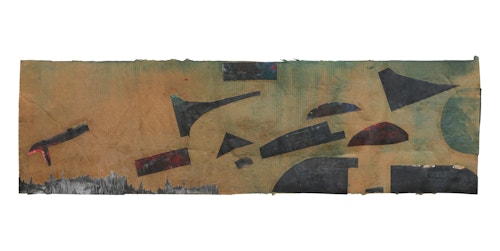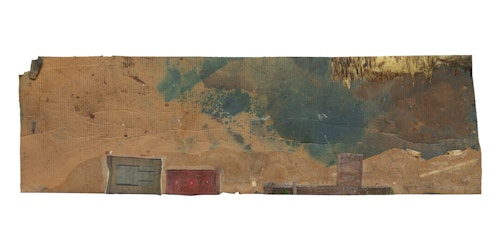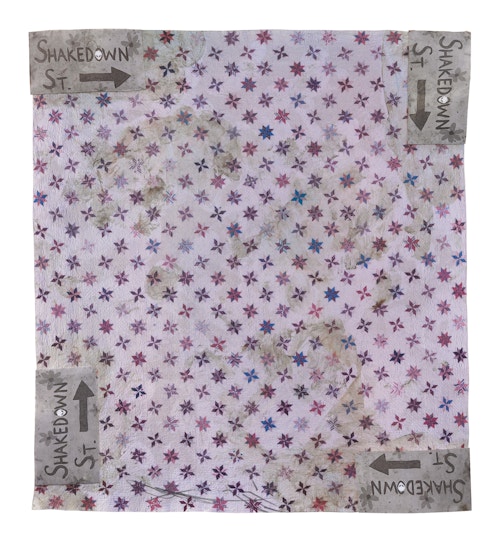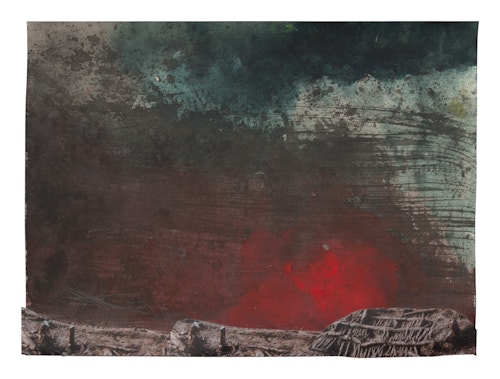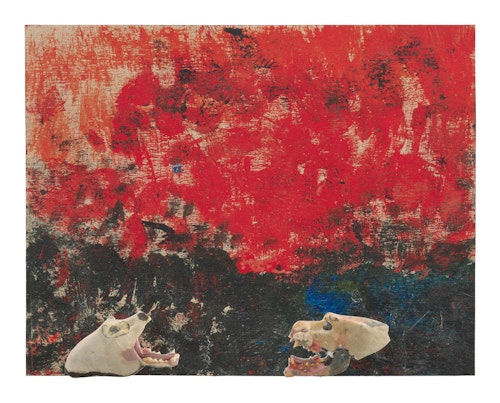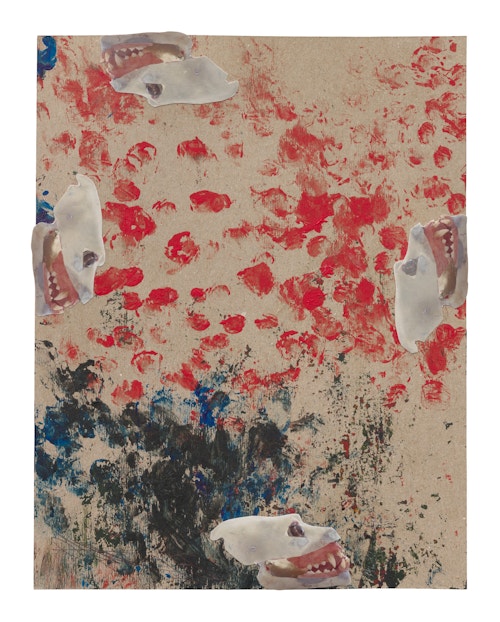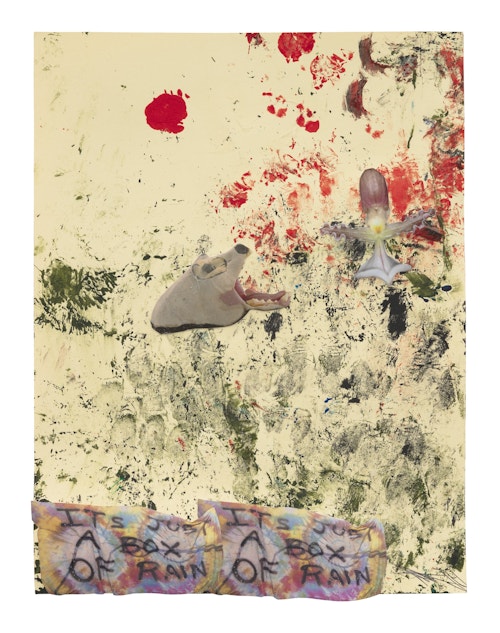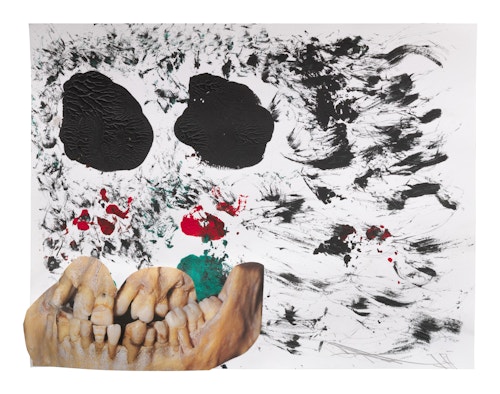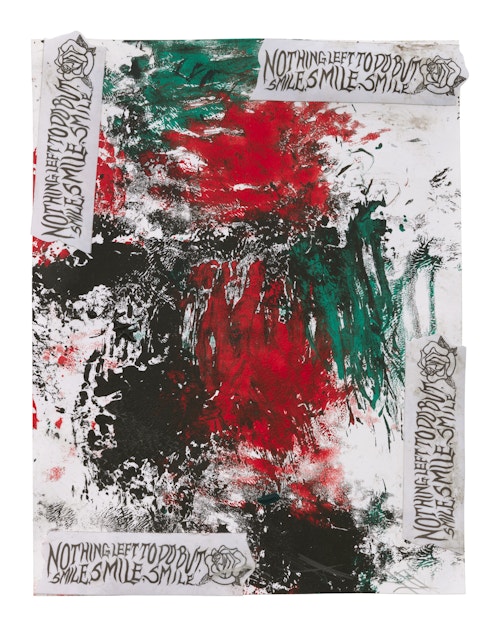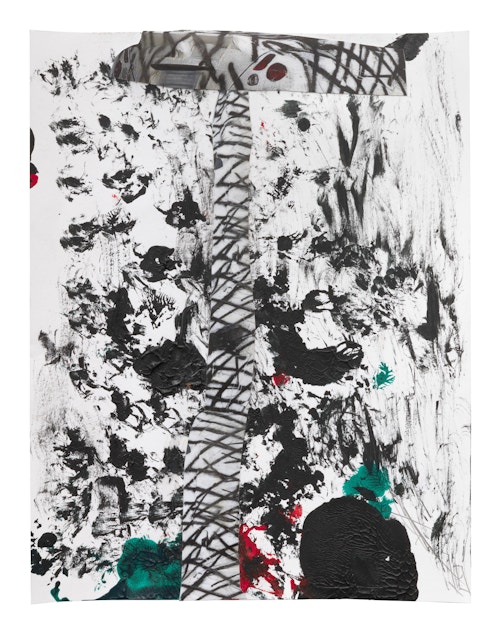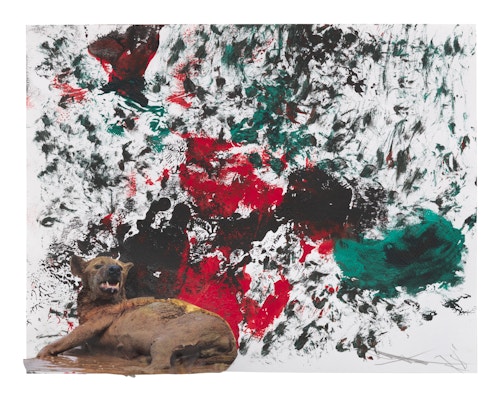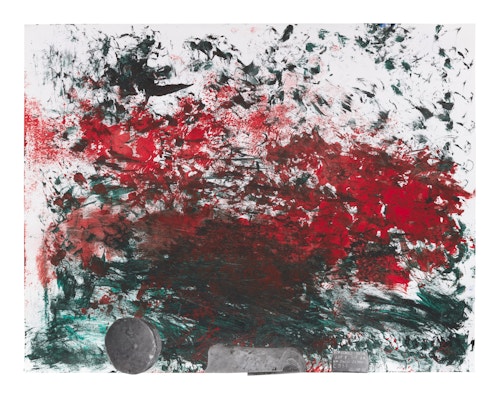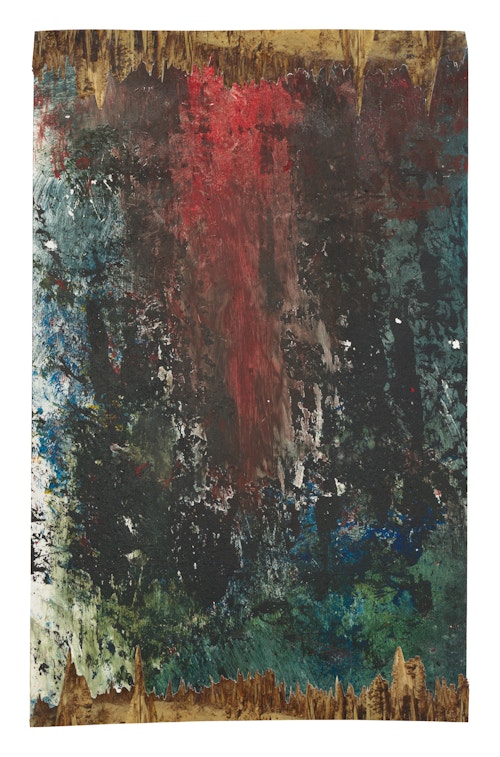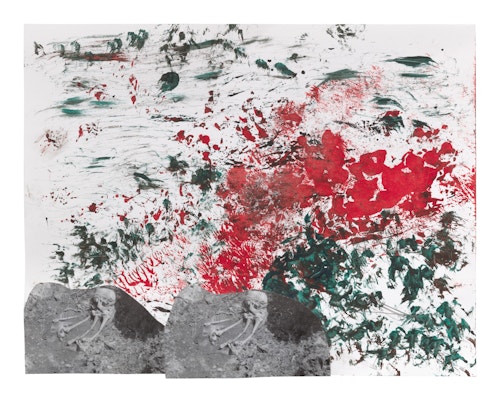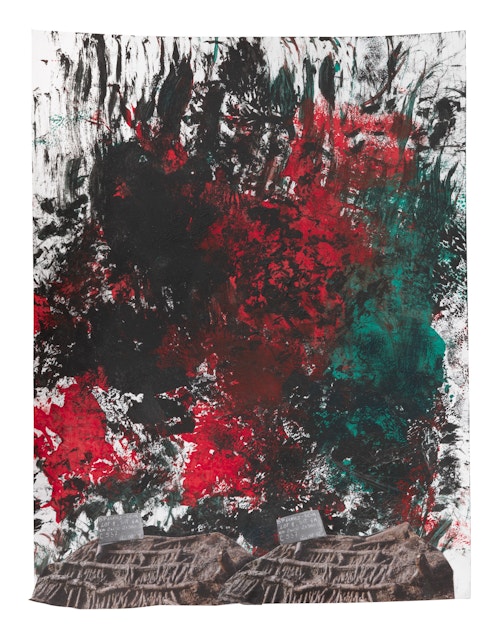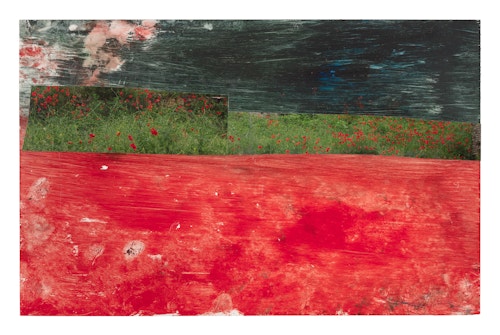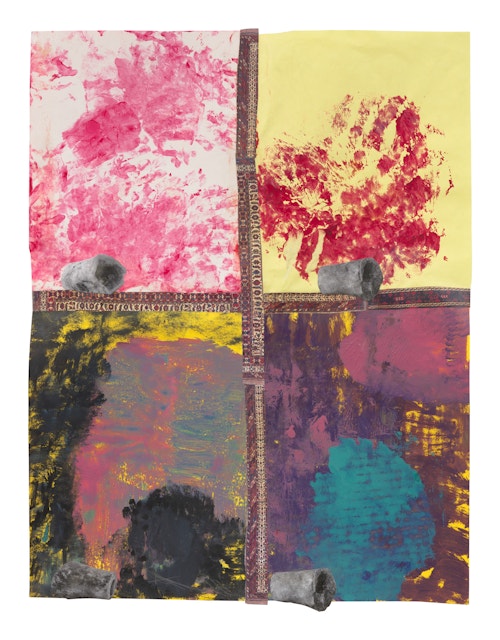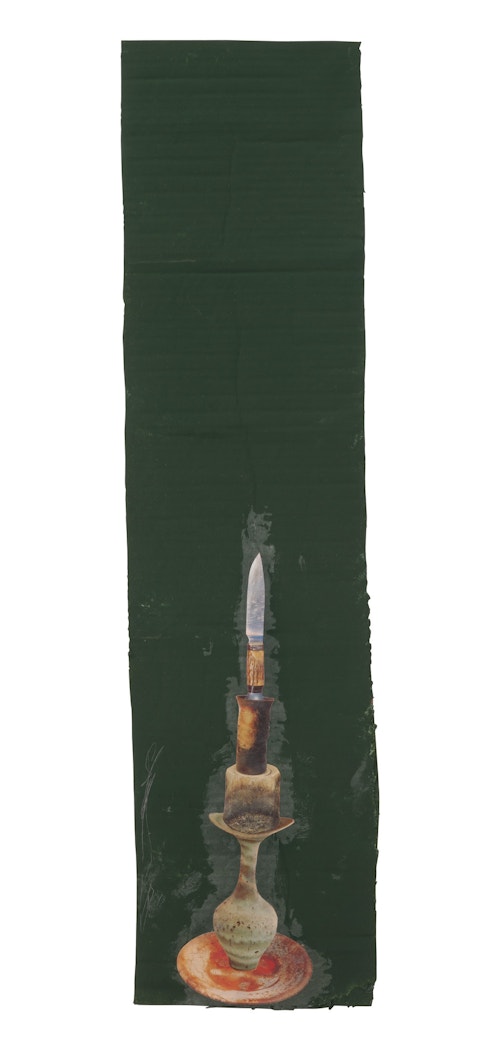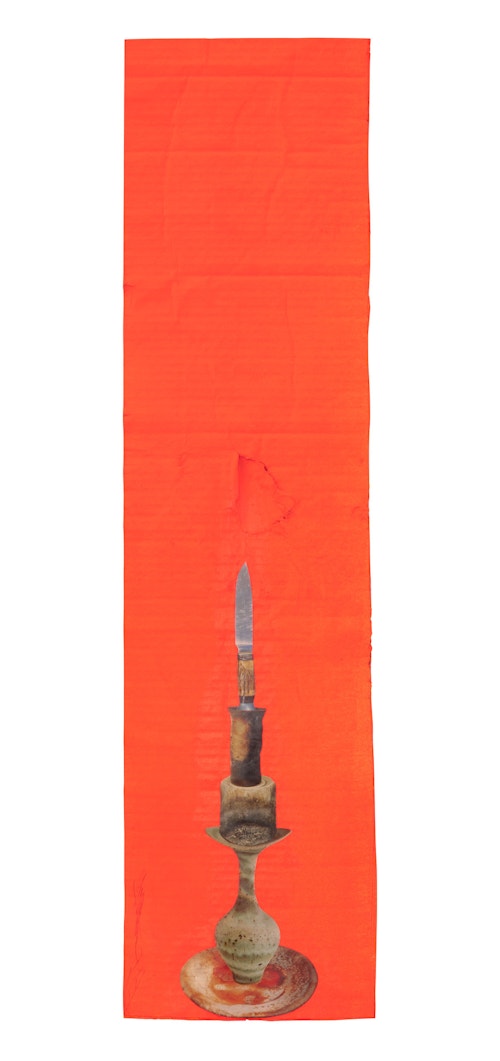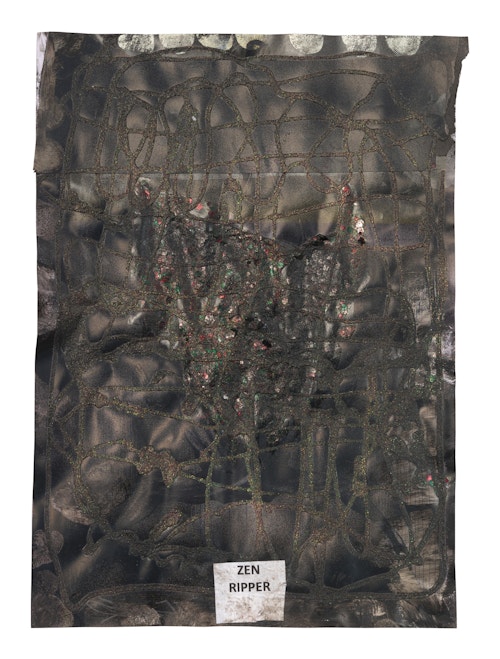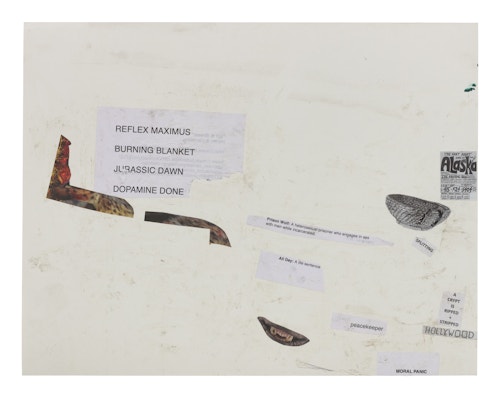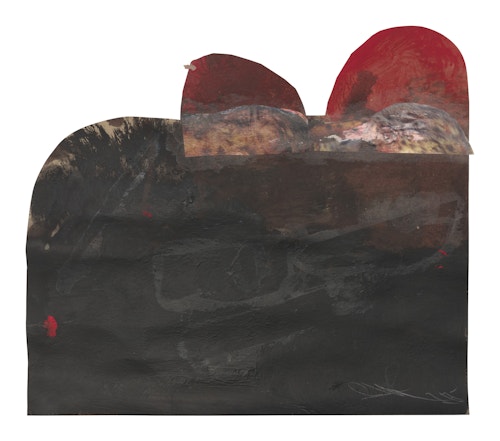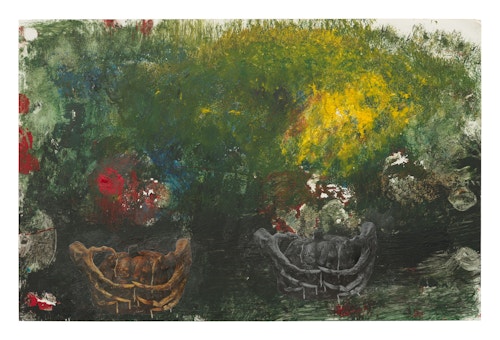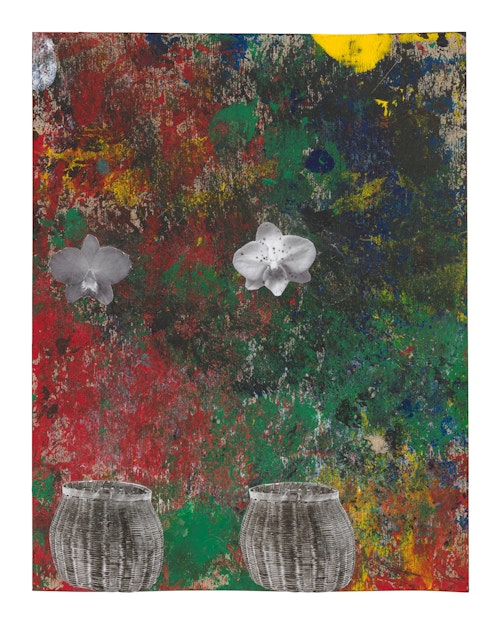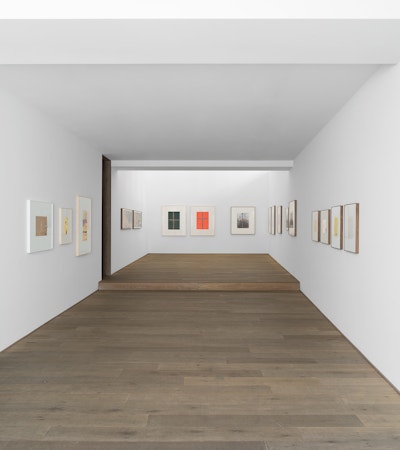
Sterling Ruby DRFTRS
Xavier Hufkens is pleased to present a two-venue exhibition of new paintings and collages by Los Angeles-based artist Sterling Ruby.
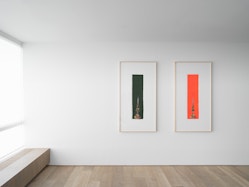
Ruby’s DRFTRS and WIDW series are two ever-evolving bodies of work that bear witness to the artist’s intense relationship with materials and his interest in issues such as sociocultural evolution, popular culture, and violence. Executed on paper, the DRFTRS (an acronym of ‘drifter’) are hybrid collages in which cut-and-pasted images occupy expressionistic landscapes. These nomadic elements, drifting through painterly space, are extracted from a vast image bank compiled by the artist. They reveal a myriad of current preoccupations including protest posters, horror movies, arts and crafts, album covers, orchids and poppies, snakeskins, stalagmites and stalactites, skulls and bones, prisons, archaeological excavations, and ancient artefacts. The painted backdrops, in palettes of red and green; red, white and blue; oranges; yellows; and murky blacks, veer from dense and apocalyptic to sparse and vibrant. Combined with the photographic images, they create a psychological tension that channels the contemporary zeitgeist. Ruby has described collage as an ‘illicit merger’, thereby highlighting the transgressive nature of the medium. He makes a visual and conceptual link, for example, between those incarcerated in the American prison system, and images from archaeological sites, equating both to burial. In this sense, the collages are analytical and emotive, an exercise in social dissection that inhabits a haunting formalism, heightened by stark and splattered brushwork, and a visceral use of colour.
The WIDW paintings (an acronym for ‘window’), are executed in acrylic, oil paint, and collaged fragments of cardboard and textile on canvas. In their composite nature, they closely relate to the DRFTRS works on paper. But the materials used in this series reflect yet another form of archaeology: the excavation of the artist’s studio. Of this Ruby has said: ‘I realised that I could use my own history and older bodies of work as this kind of archaeological legacy.’ In much the same way that he mines his visual archive, Ruby sifts through this accumulated detritus and combines these memory-laden materials with thickly painted layers of red, orange, yellow, chalky whites, and deep blacks. The tension between oppositional forces — such as movement and stasis or minimalism and maximalism — is a hallmark of Ruby’s oeuvre. In the WIDW series this can be seen in the contrast between the energetic brushstrokes and structure of the grid, or the imposition of the past on the present. The applied graphic elements that bisect the WIDW paintings are also linked to recurrent themes in his work: horizons, grids, flags, prison bars, and in this series specifically, windows. Our vantage point is deliberately ambiguous: are we looking out or looking in? Like Rorschach tests, we are left to determine for ourselves whether these are apocalyptic visions of a burning world, or the internal projections of the human mind.
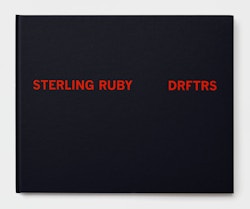
Sterling Ruby (American b. 1972) was born in Bitburg, Germany. He graduated in 1996 from the Pennsylvania School of Art and Design, Lancaster. Ruby received his B.F.A. in 2002 from the School of the Art Institute of Chicago, Illinois, and his M.F.A. in 2005 from the Art Center College of Design, Pasadena. The artist lives and works in Los Angeles. Selected solo exhibitions include Sterling Ruby: Ceramics, Des Moines Art Center, Des Moines, IA and travelling to Museum of Arts and Design (MAD), New York, NY (2018); Sterling Ruby, Winterpalais, Belvedere Museum, Vienna, Austria (2016); STOVES, Musée de la Chasse et de la Nature, Paris, France (2015) and STERLING RUBY, Baltimore Museum of Art, Baltimore, MD (2014). Ruby’s work is featured in museum collections worldwide, including the Museum of Modern Art, New York; Solomon R. Guggenheim Museum, New York; Whitney Museum of American Art, New York; Museum of Contemporary Art, Chicago; Museum of Contemporary Art, North Miami; Museum of Contemporary Art, Los Angeles; Los Angeles County Museum of Art, California; San Francisco Museum of Modern Art, California; Montreal Museum of Fine Arts, Quebec; Tate, London; Centre Georges Pompidou, Paris; and the Moderna Museet, Stockholm.







